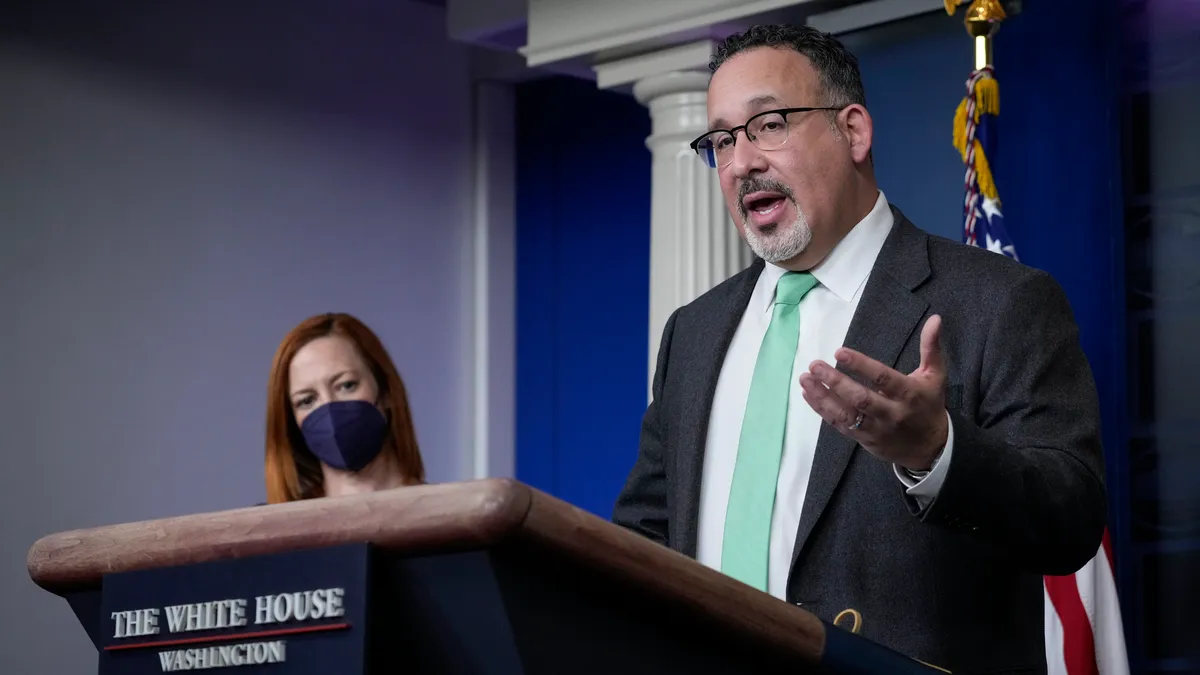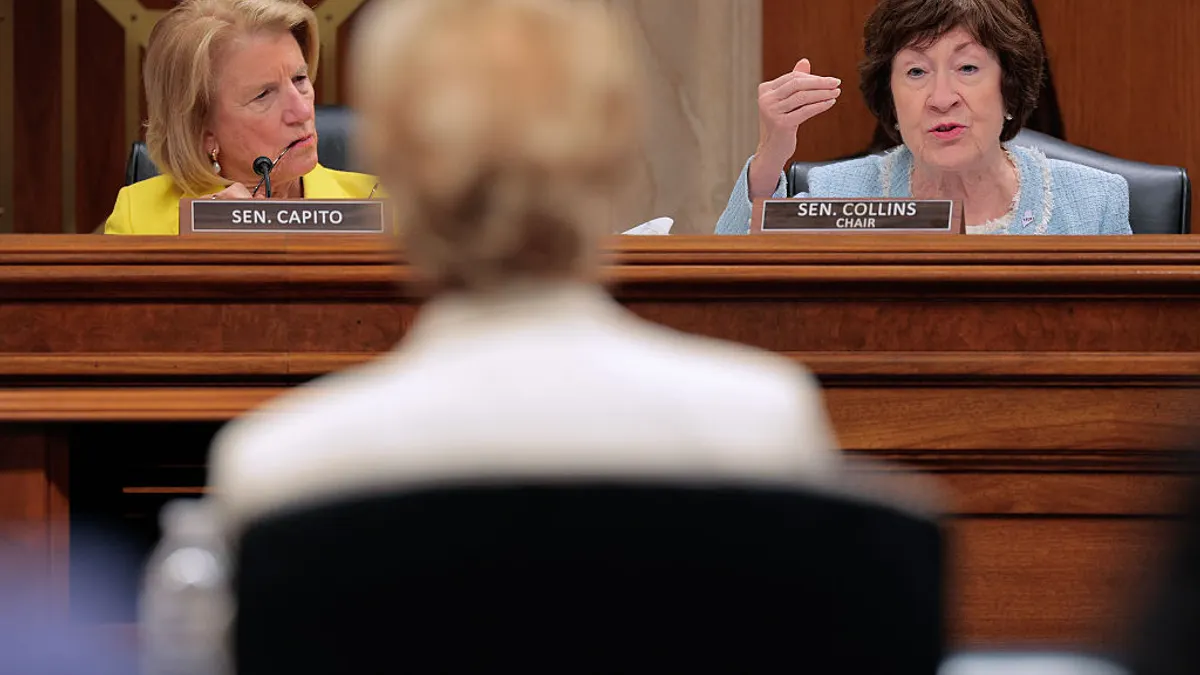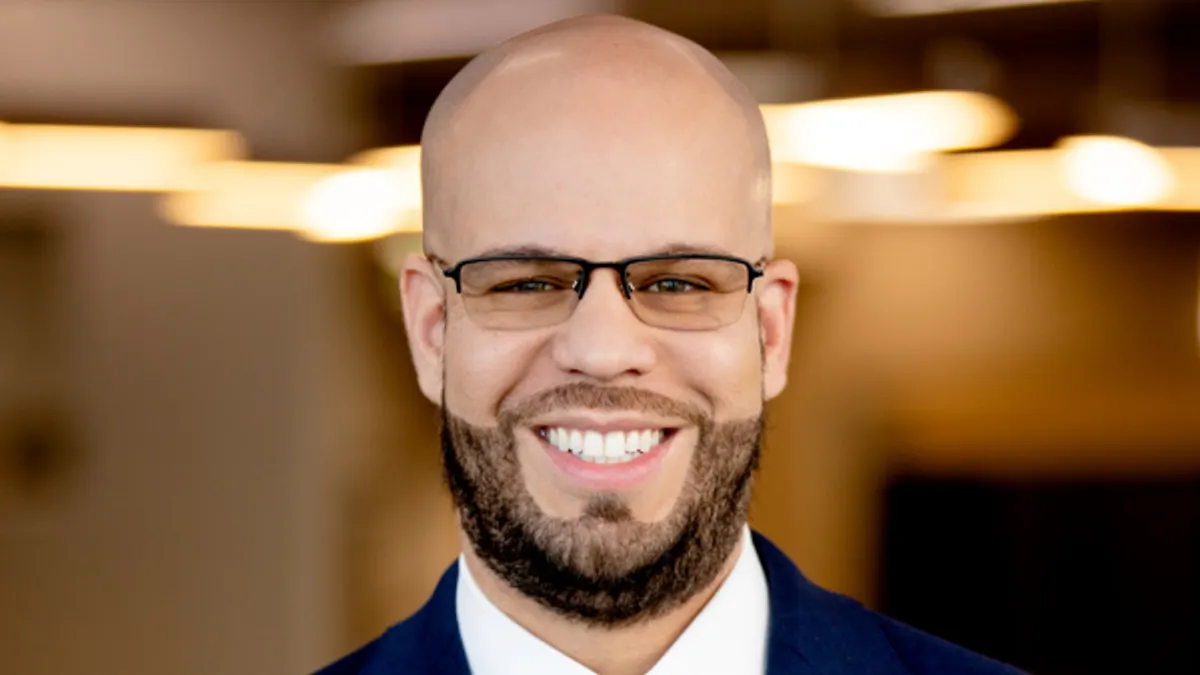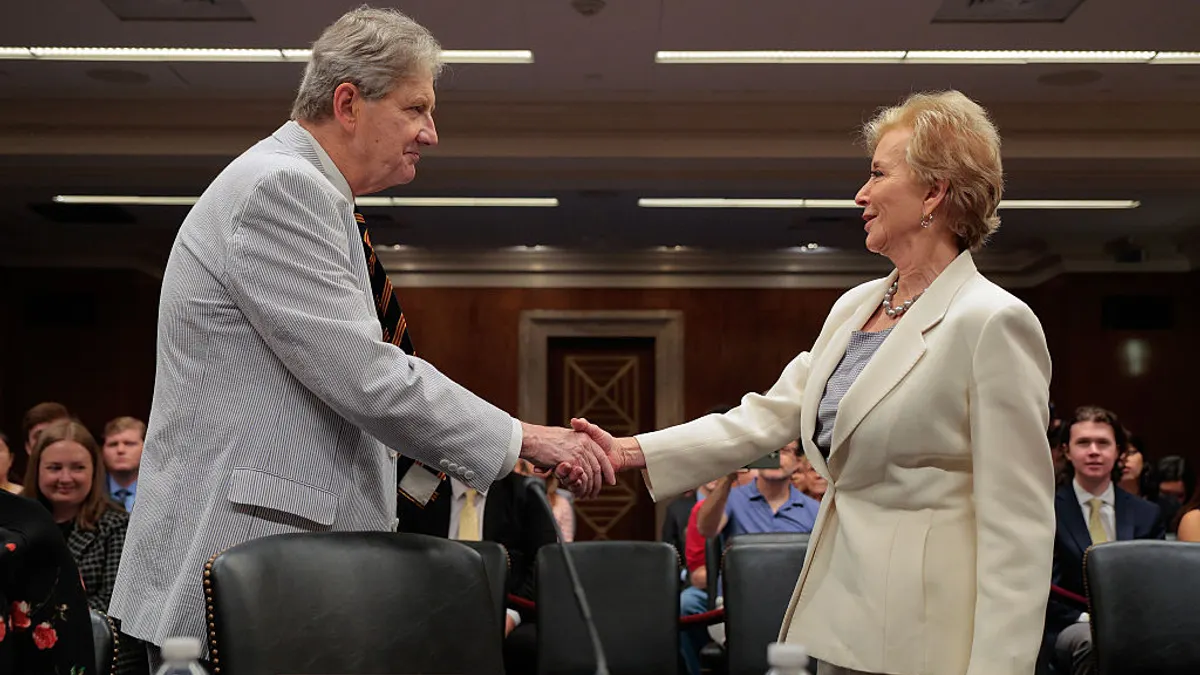In a speech today, U.S. Secretary of Education Miguel Cardona plans to push state policymakers, higher education leaders and school districts to use pandemic relief and recovery funds to increase teacher recruits "as early as possible," according to a fact sheet provided to K-12 Dive.
Cardona has previously pushed districts to direct ARP money toward hiring new staff. Today, he will also urge states to commit to increasing teacher compensation, establishing teacher residency and paid apprenticeship programs, and providing loan forgiveness or service scholarship programs for teachers.
Districts, he will urge, should increase their partnerships with educator preparation programs to support teaching residencies in schools and use teaching candidates to support educators already in the classroom.
"Having that additional support in the classroom can be so helpful," said Christine Pitts, resident policy fellow at the Center on Reinventing Public Education. "But the reality is that was a need long before the pandemic."
Cardona's announcement is to coincide with a speech he's delivering at a Carnegie Foundation Summit on Improvement in Education in San Diego later today. Building on the Education Department's previous messages to state leaders to invest federal relief funds toward addressing teacher shortages, the announcement comes less than a month after President Joe Biden called for this in his State of the Union speech.
This new drive also comes just a few weeks after Cardona said he was proud of having "restored dignity to the [teaching] profession."
"It's been pushed around for so long," he said in an interview with K-12 Dive. And now " we're standing behind our educators lifting up our schools and our systems."
Teaching profession gets national attention
A number of states are looking at increasing teacher pay, and at least 23 governors mentioned teacher compensation or recruitment and retention in their state of the state addresses, according to the Education Commission of the States, which closely tracks state education policy and trends.
At the same time, many states have also lowered — or removed entirely — academic requirements for entry into teacher preparation programs. In 2021, only 15 states required candidates to pass a basic skills test for admission teacher prep programs, down from 25 in 2015, according to the National Council on Teacher Quality.
While many states still impose a minimum GPA for entry, they often set a standard that almost always falls below the average college student's GPA of 3.0, according to Nicole Gerber, spokesperson for the organization.
"I think the profession is in absolute turmoil," said NCTQ President Kate Walsh, adding that dialing back standards to enter the teaching profession is "very shortsighted."
Earlier this month, for example, Alabama's State Board of Education announced it may eliminate some of its licensing exams — ending requirements that teacher candidates demonstrate knowledge of their content — to increase the teacher pipeline. Other states that have moved in that direction include California, Delaware, Illinois, Oklahoma, Oregon and Washington.
"Did they [the Biden administration] single-handedly transform the narrative [around teaching]? No," said Noelle Ellerson Ng, associate executive director for advocacy and governance at AASA, the School Superintendents Association. "That narrative is playing out in state and local community halls and state and local board meetings."
Advocates, leaders give states and districts direction
Instead of scaling back entrance exams, Walsh said, states could tap into a variety of other options for increasing the teacher pool, like offering emergency certification, incentivizing higher education institutions to redirect teachers to high-need teaching specialties, and increasing compensation for teachers willing to work where vacancies are especially pronounced.
Pitts said some changes could be made at the school building level.
"I think a lot of the times, the things that we do as a system that we think are elevating the profession are actually really transactional and not that meaningful," said Pitts. "One of the things that you don't see as often is inviting them [teachers] to the table to be the decision makers and drivers of pedagogy in the classroom and what they are teaching — a lot of that has to do with trust."
Districts, meanwhile, have directed stimulus money into hiring more staff, following Cardona's previous suggestions to use federal money to fill the teaching pipeline.
"What's happened is that districts are taking the stimulus money and they have spent it on adding new jobs," Walsh said. Yet they're having trouble filling those positions, which is exacerbating the shortage. "They don't know how to spend the money the government gave them, and the federal government didn't particularly help."
The announcement Cardona is set to make today could change that, as he also singles out what the department describes as districts, states and higher ed institutions that "have already established or are scaling up their partnerships and programs."
Among those examples are multiple states and institutions that have invested in residency and apprenticeship programs. Examples cited include postsecondary institutions such as Dallas College in Texas and University of Colorado Denver, as well as states like New Mexico, California and Tennessee.
"I think the administration has been nothing but brilliant and consistent around the messaging about the importance of public education, the great work that our nation's educators do — they are unrivaled there," Ellerson Ng said. "There's no one questioning what the Cardona administration thinks about educators and the importance of them."
However, Walsh said, the federal government should have stepped in by now in other ways, such as by collecting better data on teacher supply and demand.
"That train has left the station. They could have directed this money to that problem," Walsh said. Instead, the Ed Department left the responsibility to states. "Some states will do the right thing, some states won't."





















